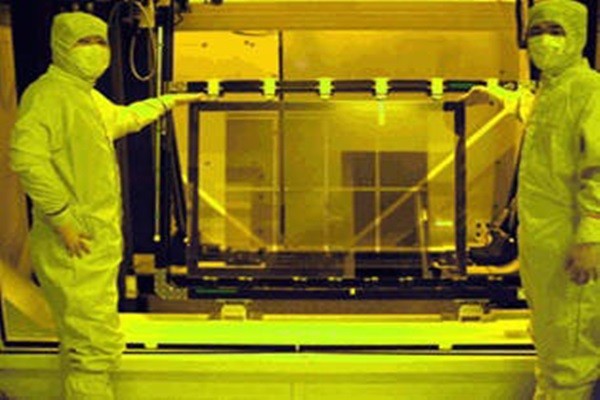Chinese photomask manufacturers are developing their own photomasks for 11th generation LCDs and 6th generation OLEDs. Chinese panel manufacturers such as BOE, CSOT, and CEC Panda are planning to replace photomasks that are being imported from Japan and the U.S. with Chinese photomasks. The fact that they are developing their own photomasks for 11th generation LCDs is drawing attention as they are developing them faster than South Korean photomask manufacturers. It has become clear that Chinese companies will shortly pass South Korean companies in back-end display industries.
According to industries on the 22nd, a Chinese photomask manufacturer called Luway Optoelectronics recently invested about $109 million (166.8 billion KRW) into a high-tech industrial complex in Chengdu and started construction of production plant of photomasks for 11th generation LCDs and 6th generation OLEDs. Both Chengdu and Luway will invest into this plant, and operation of this plant will be managed by Shenzhen Luway Optoelectronics, which is a joint corporation by Luway and Shenzhen. This plant will start operation during the fourth quarter of this year.
Photomask is a part that imprints TFT (Thin Film Transistor) onto a backplane of a display and it is currently supplied by Photronics from the U.S., LG Innotek and PKL from South Korea, and Hoya, Toppan Photomask, and DNP (Dai Nippon Printing) from Japan.
Supermask, Luway, and Starmask are Chinese photomask manufacturers and they mostly supply photomasks for color filters, which have lower level of technical difficulty than photomasks for TFT. Although they do manufacturer photomasks for TFT, they usually supply lower end of photomasks since their technical skills are not evaluated high.
It is likely that China will surpass South Korea when it comes to production of photomasks for 11th generation TFTs. Supermask, which is number one Chinese photomask manufacturer, was the first to announce its investment into photomasks for 11th generation LCDs. Luway also jumped into this market and it actually started construction of a new plant earlier than its competitors.

On the other hand, South Korean companies have yet to enter photomask markets for 11th generation LCDs. Although LG Innotek is developing relevant photomasks after LG Display decided on its investment for 10.5th generation OLEDs, there are not any other incidences of development of photomasks.
It is difficult to carry 11th generation LCDs so that substrates are not bent and take care of each process at the same time. Since size of substrates has gotten bigger, problems such as forming even thin films and others need to be taken care of. As a result, it is difficult to manufacture 11th generation photomasks.
Luway is also working on development of photomasks for 6th generation OLEDs. So far, no Chinese photomask manufacturers have supplied photomasks for 6th generation OLEDs. Most of these photomasks are supplied by ones from Japan and the U.S.
It is expected that Luway is looking to partner up with Chinese panel manufacturers such as BOE, CSOT, and CEC Panda that invested into 11th generation LCDs and 6th generation OLEDs. Supermask, which decided to invest into Shenzhen, is working on partnership with BOE.
South Korean industries are studying what kind of impact will this have on South Korean companies in the future.
“China is working to increase percentage of domestic products used for its back-end industries followed by display industries and its government has set a high goal as it is also supporting its businesses.” said a representative. “Because Chinese photomask manufacturers are investing into 11th generation TFTs while percentage of its 8th generation TFTs is still low within photomask markets, it will take some time for them to actually supply their products.”
A market research company called Technavio is estimating that photomask markets in APAC (Asia Pacific Activities Conference) regions will grow by 2% annually from 2016 to 2020 and that they will be worth more than $2.10 billion (2.1384 trillion KRW) in 2020.
Staff Reporter Bae, Okjin | withok@etnews.com